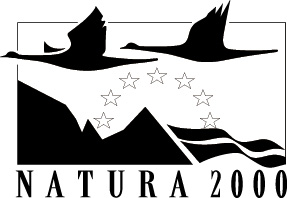This action will include a field survey of the invasive tree species Ailanthus altissima within all project areas. For each area, we will estimate the invaded area size, the population density of Ailanthus, and the size and location of the mature female trees. This action is necessary to determine the baseline for this project, as a starting point for quantified monitoring of the project’s implementation.
This action will include preparing the Ailanthus removal protocol, which will be tested, improved, and implemented through this project. Our protocol will contain three different removal methodologies, and their application will depend on the project area and targeted habitat types.
This action involves the training of the project team in Ailanthus eradication methods, planned in the first year of the project. This action is important because the Ailanthus eradication is extremely challenging, and the application of inappropriate methods or their application at the wrong time of the year can result in failure or make the infestation worse.
This action includes the acquisition of permits required for the implementation of the project activities and informing the stakeholders about the project.
This action includes the removal of Ailanthus within the project area Krka, from the habitat type 32A0, its buffer zone, and from sources and corridors of spread. The goal of action C1 is to directly improve the conservation status and/or halt the decline of habitat types in Natura 2000 site SCI NP Krka.
Action C2 consists of the Ailanthus removal in the project area JI Pelješac. The goal of this action is to directly improve the conservation status and/or halt the decline of Natura 2000 priority habitat 6220* Pseudo-steppe with grasses and annuals of the Thero-Brachypodietea, through the removal of Ailanthus from 4 hectares located close to the priority habitat type, and from the main sources and corridors of spreading nearby.
The action C3 includes the removal of Ailanthus from centers of cultural heritage in the southern Mediterranean part of Croatia, cities Dubrovnik, Ston, and Mali Ston; as well as the planting of replacement trees when needed. The goals of action C3 are to directly improve the cultural heritage, to reduce the unintentional spread and to contribute to the visibility of the project.
The action D1 entails monitoring of the total number of Ailanthus trees removed and the percent of the area cleared within all of the project areas (Krka, JI Pelješac, Ston and Mali Ston, and Dubrovnik), to monitor the progress of the project, to compare the effectiveness of the tested protocols at different habitats or locations.
The action D2 consists of monitoring the ecological changes in the habitats types in which the Ailanthus removal is conducted. This action is critical to test how did the removal of invasive species impact the conservation status of the targeted habitat types.
The action D3 will include the analysis of the different removal protocols, in terms of effectiveness.
The purpose of this action is to evaluate the success of public awareness-raising activities through this project.
The action E1 includes activities of raising the public awareness of the Natura 2000 network, the LIFE program, and specific biodiversity problems targeted by our project through social media, news outlets, public talks and workshops.
The action E2 includes meeting and communicating with relevant LIFE and non-LIFE projects to establish collaboration and communication with experts and practitioners in the conservation sector.
Action E3 includes the dissemination of project results, through activities such as publishing the national protocol, printing leaflets, brochures and notice boards and organizing technical workshops.
This action will include endorsing institutions and experts who will be responsible for expert support in data processing (e.g., identifying species) of reported alien species observations and quick screening, and development of rapid response protocols for terrestrial plant species listed on Union List.
To ensure future safe and sustainable Ailanthus waste management we will prepare, near the end of our project, a feasibility study and a draft business plan for using Ailanthus green waste for pellet production.

